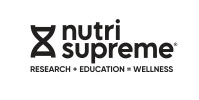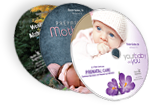- Home
- Learning Center
- Preventing Vision Loss Through Nutrition
Preventing Vision Loss Through Nutrition
Posted on
Preventing Vision Loss Through Nutrition
Edward Gruber, CN
Increasingly, research is showing that vision loss associated with aging may be prevented and slowed by vitamins and minerals found in fruits and vegetables high in antioxidants, or taken in supplement form.
A small sampling of the studies follows below:
* In 2001, the National Eye Institute (NEI) announced results of the Age Related Eye Disease Study (AREDS), which showed that high levels of specific nutritional supplements – includingbeta-carotene, vitamin C, vitamin E, zinc and copper -- decreased the risk of AMD and slowed worsening of the disease. Based on the study, The American Academy of Ophthalmology began to recommend that patients with significant AMD take nutritional supplements as listed in the AREDS study to reduce the risk of vision loss.
*Several years later, a nationwide AREDS 2 trial looked at whether even better results could be achieved by changing the AREDS formula to include lutein, zeaxanthin and Omega-3 essential fatty acids.The second study also removed beta-carotene from the original formula, since it is known to promote lung cancer in smokers (smoking is thought to be a significant risk factor in eye health), and lowered the level of zinc, which caused some gastrointestinal problems in patients in the original study.
The study, which concluded in May of 2013, foundno overall additional benefit from addinga 5-to-1 mixture of lutein and zeaxanthin to the formulation. However, the investigators did find some benefits when they analyzed two subgroups of participants: those not given beta-carotene, and those who had very little lutein and zeaxanthin in their diets.
According to Emily Chew, M.D., deputy director of the NEI Division of Epidemiology and Clinical Applications and the NEI deputy clinical director, study participantswho took an AREDS formulation with lutein and zeaxanthin but no beta-carotene, reduced their risk of developing advanced AMD over the five years of the study by about 18 percent, as compared with participants who took an AREDS formulation with beta-carotene but no lutein or zeaxanthin. Further analysis showed that participants with low dietary intake of lutein and zeaxanthin at the start of the study, but who took an AREDS formulation with lutein and zeaxanthin during the study, were about 25 percent less likely to develop advanced AMD compared with participants with similar dietary intake who did not take lutein and zeaxanthin.
The study also showed that removing beta-carotene from the formula and lowering the levels of zinc did not interfere with the formula’s efficacy.
While AREDS 2 did not find that adding omega-3 reduced the risk of AMD progression, other studies, including an important Harvard Women’s Health Study, have had different results.In the Harvard trial, 39,876 middle-aged women who were asked to fill out detailed food frequency questionnaires were followed for an average of 10 years. An analysis in the Archives of Ophthalmology found that the women who had reported eating one or more weekly servings of fish (dark meat fish like canned tuna, salmon and mackerel, in particular) were 42 % less likely to develop AMD than those who ate less than a serving each month.
It’s worth noting that a world-famous retina specialist with whom I frequently consult continues to recommend omega-3 to his patients since he believes it might be theform of omega-3 used in the Areds 2 trial (ethyl ester rather than triglycerides), not the fish oil itself,that was responsible for the negativeresults.
Also showing a link between nutrition and eye health:
*A Brigham and Women’s Hospital trial that found that taking a combination of vitamins B6, B12 and folic acid appeared to decrease the risk of AMD, along with lower blood levels of homocysteine, in women with cardiovascular disease (Archives of Internal Medicine, 2009).
*A study reported in the The American Journal of Clinical Nutrition (July, 2007), whichfound that consuming lots of sugar andstarchy foods (which causeblood sugar to spike) may make eyes more vulnerable to AMD.
While new findings linking eye health to nutrition are likely to emerge in coming years, it is already apparent that quitting smoking, limiting consumption of sugars and eating a diet rich in fruits and vegetables high in antioxidantsmay help prevent, or at least slow the progress of age-related vision loss. (While it’s best to get nutrients through diet, vitamins and minerals can be obtained through supplements if necessary.)
A Final Word
In 2003, the NEI designated the month of May, “Healthy Vision Month.” Every year at that time, the agency issues a call to Americans to take the necessary steps to prevent vision loss and, in cases where vision has already been lost, protect the vision they have left.
As a first line of defense, the NEI recommends a comprehensive dilated eye exam. In this painless procedure, an eye care professional examines the eyes to look for common vision problems and eye diseases, many of which have no early warning signs.
With the appropriate diet and annual screenings, we can greatly increase the chances of preserving our precious sight for life.
 Loading... Please wait...
Loading... Please wait...

 Meet
Meet  VIEW OUR
VIEW OUR  A HEALTHY
A HEALTHY 



